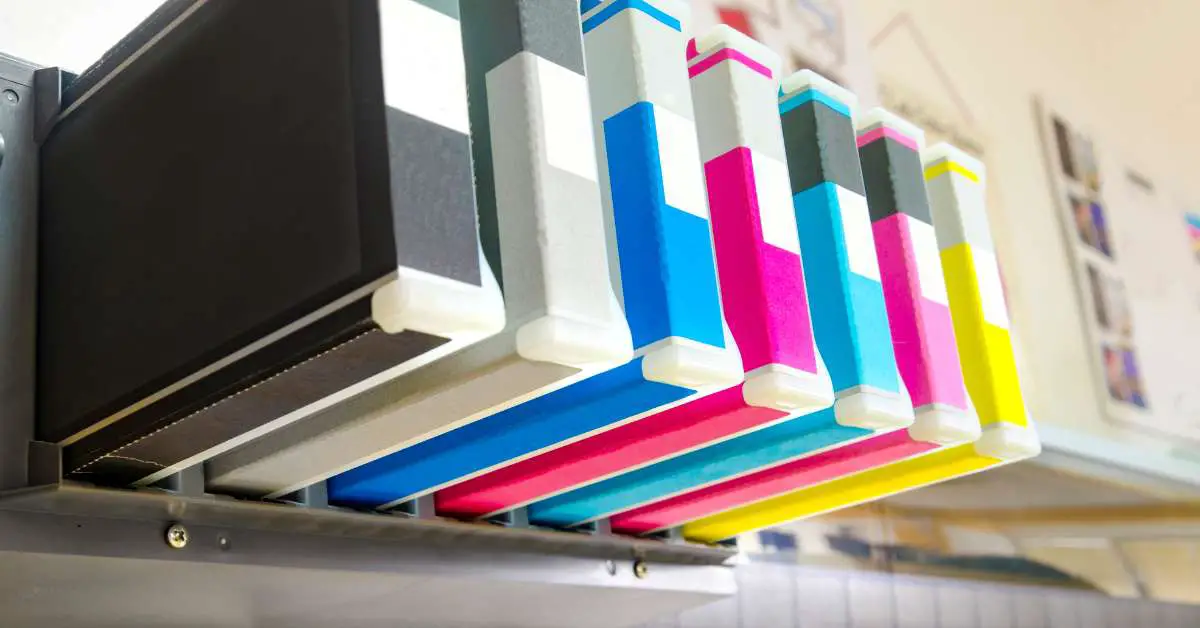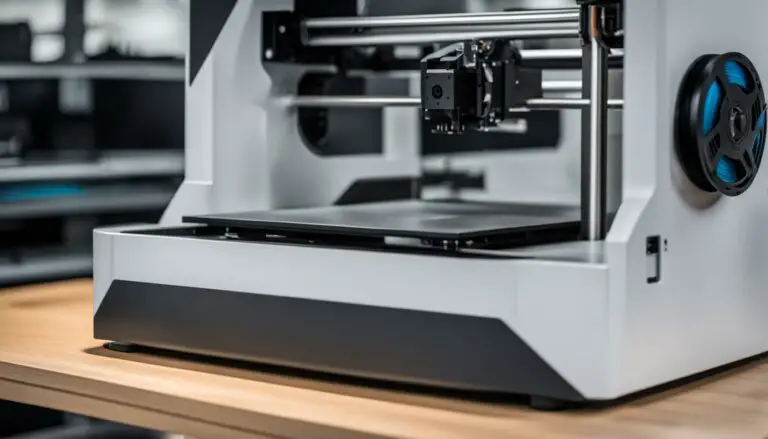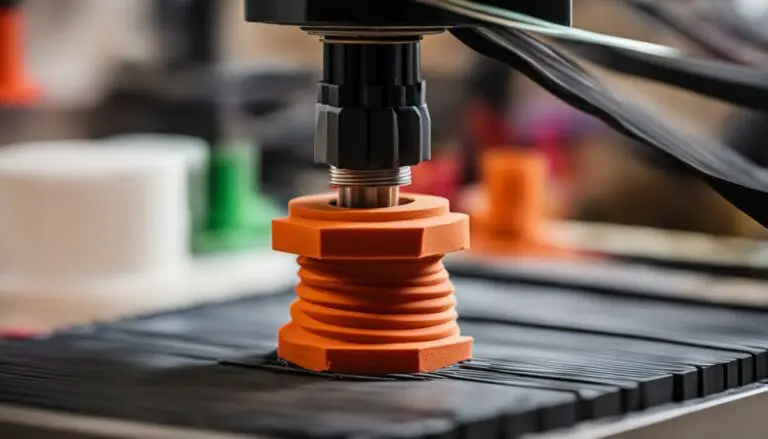What’s an Inkjet Printer? Inkjet Printer Definition Simplified!
Originally posted on August 28, 2023 @ 1:50 pm
This article aims to provide readers with a thorough understanding of the definition of Inkjet Printers. These printers, which are essential in the business world, use the process of propelling ink droplets onto different media to produce images.
In this guide, we not only provide a clear and concise inkjet printer definition but also explore the nuanced differences between inkjet printers and laser printers. As we unravel the technical aspects and operational disparities, you’ll gain a solid understanding of which technology best suits your printing needs. Whether you’re a tech enthusiast or a casual user, join us to navigate the realms of print and make informed decisions.
What Is an Inkjet Printer Simple Definition?
An inkjet printer is a type of print device that creates images by spraying tiny drops of ink onto paper or other surfaces. It’s a popular choice for producing high-quality color documents and photos due to its precision and versatility.
Also Read: What is a Printer?
Definition of Inkjet Printer – The Details
An inkjet printer, a ubiquitous piece of modern technology, operates on a remarkably simple yet ingenious principle. It creates images and text by propelling minuscule drops of ink onto various types of media, such as paper, fabric, or even plastic. This process unfolds through a finely orchestrated interplay of components, culminating in the production of high-resolution prints.
Print head
At the heart of an inkjet printer is the print head, an assembly of microscopic nozzles that expel ink droplets with precision. These droplets are minutely controlled, forming intricate patterns as they settle onto the surface. The process is rapid, allowing for swift print speeds that suit both personal and professional applications/print documents.
Color Options
Inkjet printers offer a broad spectrum of color options, rendering vibrant and detailed images. Their versatility extends from text documents to intricate photographs, catering to diverse print needs. Moreover, the ability to use different ink formulations, such as dye-based or pigment inks, adds another layer of customization, influencing factors like print longevity and color printers vibrancy.
Comparison with Other Printers
A defining characteristic of inkjet printers is its non-impact nature, meaning the print head doesn’t physically touch the printing surface. This attribute not only preserves the print head longevity but also accommodates various printing materials, including delicate or irregular surfaces.
In comparison to other printing technologies, such as laser printing, inkjet printers often exhibit advantages in terms of color accuracy, image complexity, and initial cost. However, considerations regarding speed and long-term cost efficiency might sway users towards inkjet and laser printers as alternatives for certain tasks.
What’s the Purpose of Inkjet Printer?
The purpose of an inkjet printer is to produce high-quality images and text on various surfaces, including paper, fabric, and more. It achieves this by propelling tiny droplets of ink cartridge onto the chosen medium, creating detailed prints with vibrant colors.
Inkjet printers are widely used for both personal and professional applications, from producing documents and photos to creating marketing materials and artwork. Their versatility, ease of use, and ability to handle different printing tasks make them a popular choice in digital printing for a wide format printers and range of users.
Also Read:What is Printing? How Does it Work?
Advantages of Inkjet Printers – What Are The Pros of Inkjet Printers?
Inkjet printers offer several advantages that make them popular for various printing needs. They excel at producing high-quality color prints, making them ideal for photo printing and graphics. Their ability to create detailed and vibrant output is unmatched. Additionally, inkjet printers are versatile and capable of handling various legal size paper types and paper sizes, including specialty media like glossy printing photos paper or fabric transfers.
An inkjet printer is generally more affordable upfront than laser printers and is compact in size, making it suitable for home or small office environments. Inkjet printers also consume less power during operation. Their quieter print process and ability to print on irregular surfaces further contribute to their appeal. Overall, inkjet printers are a versatile, cost-effective, and quality-oriented option for those seeking exceptional color printing photos and print high volumes.
What Type of Paper to Use With Inkjet Printers?
Inkjet printers work best with paper specifically designed for inkjet technology. This paper is usually coated to absorb ink drops during inkjet printing without bleeding or smudging. Look for labels like “inkjet paper” or “photo paper” on packaging.
There are variations for different print needs: matte paper for documents, glossy paper for photos, and specialty paper for projects like greeting cards. It’s essential to match the paper type with the printer settings for optimal results. Using the appropriate paper ensures that the ink is absorbed correctly, resulting in sharp, vibrant prints with minimal risk of smearing or fading.
How Do You Tell if a Printer Is an Inkjet? What Is Considered an Inkjet Printer?
You can identify an inkjet printer by its method of printing. An inkjet printer propels tiny droplets of ink onto paper or other surfaces to create images and text. It’s characterized by its vibrant color capabilities and versatility in handling various media types.
Inkjet printers are commonly used for print documents, photos, and graphics due to their high-quality output. Laser printers, on the other hand, use toner and heat to fuse images onto paper. So, if a printer uses the ink-droplet method, it’s likely an inkjet. The ability to produce detailed prints on diverse media is a key indicator of an inkjet printer.
What Are Different Inkjet Technologies?
Various inkjet technologies cater to diverse printing needs making them suitable as home and business printers. Thermal inkjet for such printers employs heat to create bubbles in the ink, forcing printer ink onto paper through print head. Piezoelectric material or crystal inkjet, on the other hand, uses piezoelectric materials that change shape when an electric current is applied, expelling ink drops.
Continuous inkjet maintains a constant flow of inkjet inks through the print head, with a deflection mechanism guiding droplets to create patterns. Drop-on-demand (thermal DOD printing) is divided into thermal DOD, where heat creates droplets, and piezoelectric DOD, which relies on piezoelectric crystal elements and charging electrode for precise droplet ejection. These technologies offer different advantages in terms of print quality, speed, and precision, shaping the diverse landscape of inkjet printing applications.
Laser vs. Inkjet Printer- What Are The Differences?
To know the differences, let us first study the laser printer definition.
What is a Laser Printer?
A laser printer is a type of printing device that uses a combination of toner and heat to produce text and images on paper. It works by creating an electrostatic deflection plates image on a photosensitive drum, which then attracts and fuses toner onto the paper through heat. Laser printers are known for their fast printing speeds, sharp text quality, and cost-effective monochrome home printing, making them suitable for high-volume text documents.
Which Is Better- Laser or Inkjet Printers?
Laser and inkjet printers are distinct in their printing mechanisms and characteristics.
Mechanism
Laser printers use toner and heat to fuse text and images onto paper, yielding sharp and fast prints, making them ideal for high-volume text documents. Most inkjet printers, in contrast, propel tiny droplets of ink onto paper after print head moves, producing detailed and vibrant prints using more ink, making them preferred most printers to print color photos and graphics.
Time and Cost
While laser printers are generally faster and more cost-effective for text-heavy printing, inkjet printers excel at producing high-quality color output. Laser printers often have a lower cost-per-page for monochrome prints, but inkjet printers offer better color accuracy.
Versatility
Inkjet printers are versatile in handling various media, while laser printers are better suited for plain paper. Choosing between them depends on your specific printing needs, such as volume, type of documents and paper trays, and color requirements.
What Is The Difference Between Toner and Ink Cartridges?
Toner and ink cartridges are used in different types of printers and employ distinct printing technologies. Toner is used for dye inks UV inks, aqueous inks , laser printers and photocopiers. It’s a dry powder in the ink reservoir consisting of tiny particles of various pigment solvent inks and plastic, which are fused onto paper using heat.
Ink cartridges, on the other hand, are used in inkjet printers. They contain black ink in the ink chamber, which is sprayed onto paper in the form of tiny droplets of black ink. Toner is more suitable for high-volume text printing due to its efficiency and speed, while ink cartridges are preferred for high-quality color printing and photo reproduction.
What Is the Difference Between an Inkjet Printer and a Regular Printer?
The term regular printer could refer to either all in one printers, inkjet printer or a laser printer. All of these are commonly used types of all in one printers. To clarify, here are the differences between an inkjet printer and a laser printer:
Inkjet Printer
- Printing Technology: Uses tiny droplets of ink sprayed onto paper or other media to create images and text.
- Quality: Excels in producing high-quality color prints and detailed images, making it ideal for photos and graphics.
- Media Handling: Versatile in handling different types of paper and specialty media, such as glossy photo paper and color ink.
- Cost: Generally more affordable upfront, making it suitable for home and small office use.
- Speed: Slower compared to laser printers, especially for high-volume text printing.
- Maintenance: Print heads might need occasional cleaning , and cartridges can dry out if not used regularly.
Laser Printer
- Printing Technology: Uses toner (dry powder) and heat from laser beams to fuse images and text onto paper.
- Image Quality: Provides sharp and clear text output with black ink for black and white documents , making it ideal for high-volume printing.
- Media Handling: Works well with regular paper and is often preferred for text-based documents.
- Cost: Laser printers are generally cost-effective for monochrome (black ink and white) printing, but color laser printers can be more expensive.
- Speed: Faster printing speeds and ink drying compared to inkjet printers, especially for text documents.
- Maintenance: Toner cartridges have a longer shelf life and the printer ink is less likely to dry out if the printer is not used frequently.
Should I Purchase Printer from a Major Retailer or Local Dealer?
Both major retailers and local dealers of consumer printers have their advantages. Major retailers of consumer printers like HP Officejet often offer a wider range of printer options, competitive prices, and the convenience of online shopping.
Local dealers may provide personalized advice, hands-on demonstrations, and specialized support. Consider factors like product variety, price, customer service, and your specific needs before you buy new printer. Major retailers of home printers can be suitable for convenience and pricing, while local dealers might offer better guidance and support for selecting the right printer like hp OfficeJet for your specific requirements.
What is the Region Coding of Printers and Ink Cartridges?
Region coding in printers and ink cartridges refers to a practice where manufacturers restrict the compatibility of ink cartridges with specific printer models based on geographical regions. This means that printer ink cartridges purchased in one region may not work in printers from another region, even if the printer model is the same.
The goal is often to control pricing, distribution, and sales strategies. However, this can limit consumer choices and hinder the use of compatible or more affordable cartridges. It’s important to be aware of region coding of entire cartridge when purchasing printers and color ink cartridges, especially if seeking flexibility and cost-effectiveness.
What is Business Model Used by Inkjet Printer Manufacturers?
Inkjet printer manufacturers often adopt a business model known as “razor and blades” or “loss leader.” They sell the printer hardware at relatively low prices or even at a loss, relying on ongoing revenue from ink cartridge sales.
While inkjet technology printers themselves are affordable, ink cartridges can be expensive and yield significant profit margins. This approach aims to create a long-term relationship with customers, as they continue to purchase cartridges for their printers. Manufacturers focus on building brand loyalty, selling proprietary ink color cartridges, and utilizing various pricing strategies to maximize profits from ink color sales over the printer’s lifespan.
FAQs
How do I know if my printer is inkjet?
You can determine if your printer is based on inkjet technology by its printing mechanism. Inkjet printers use liquid ink sprayed onto paper through a print head to create images and text. They typically have separate cartridges in the print head each containing liquid ink that is sprayed through several tiny nozzles from print head.
If your inkjet technology printer produces color prints with vibrant details and uses liquid ink cartridges, it’s likely an inkjet printer. Laser printers, in contrast, use toner powder fused onto bond paper using heat and are generally more suitable for text-heavy documents.
Do inkjet printers use ink cartridges?
Yes, desktop inkjet printers also use ink cartridges. These inkjet technology cartridges contain ink that is sprayed onto paper through several tiny nozzles in the print head to create images and text.
The cartridges are replaceable and come in different colors (cyan, magenta, yellow, and black) to enable full-color printing. The inkjet printing process relies on the controlled ejection of ink drops onto the bond paper to produce high-quality prints with vibrant colors and fine details.
What does inkjet mean in a printer?
In a printer, “inkjet” refers to the technology where tiny droplets of liquid ink are propelled onto paper or other media to create text and images. This method allows for high-quality color printing and precise detailing, making it suitable for various applications such as photo printing and graphic design.
Conclusion
The inkjet printer stands as a testament to the marvels of modern printing technology. With its ingenious ability to transform digital data into tangible, high-quality prints through the precise orchestration of liquid ink droplets, it has revolutionized how we produce images and text.
Its versatility in handling diverse media types, coupled with its exceptional color accuracy, makes it a favored choice for both personal and professional printing needs. As we’ve delved into the inkjet printer definition, its mechanics, advantages, and role in the realm of technology, we’ve gained a deeper appreciation for the inkjet printer’s pivotal role in shaping the way we document, communicate, and express ourselves visually.







